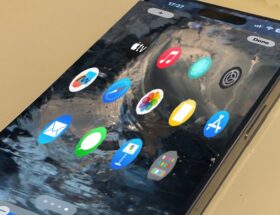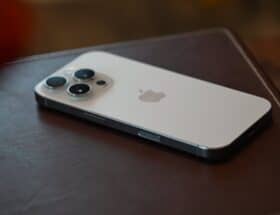iPad Pro
 1 Facebook x.com Reddit Rumour assessment 🤔 Possible
1 Facebook x.com Reddit Rumour assessment 🤔 Possible
Last update 7 hours ago
A new report from a supply chain analyst suggests that Apple will begin switching its current iPad lineup to OLED as early as 2026, with a new foldable tablet coming soon after.
In A report provided by Display Supply Chain Consultants (DSCC) suggests that Apple will introduce an 8.5-inch OLED iPad mini in 2026. This is not the first time DSCC has made such a suggestion, as DSCC CEO Ross Young has taken such a position in October 2024.
DSCC suspects Apple will upgrade both the 11-inch and 13-inch iPad Air to OLED in 2027. This is in line with another rumor from August, which said Samsung Display would be chosen as the primary supplier of OLED panels for the iPad Air.
The iPad Air was originally expected not to get an OLED upgrade until 2028.
According to a report, Apple could also release an 18.8-inch foldable iPad Pro in 2027. The day before the DSCC report was published, another report said Apple would release a giant foldable iPad that would be about the size of two iPad Pros placed side by side, but the release date was set for 2028. year.
The report is largely similar to a recently published product roadmap that appeared on X. It also predicted an OLED iPad mini in 2026, OLED iPad Air models in 2027.
That report also suggested the 18.8-inch “foldable” tablet would launch in 2028.
In November, a report said the MacBook Air's OLED display had been delayed from its projected 2027 release to 2028.
Like any rumor about a product that's coming in a year, take it with a grain of salt. Still, Ross Young is good at detailing the display supply chain.
What OLED does for Apple
The iPad's move to OLED is a long-standing rumor that has been circulating for years, and it always seems like it's two or more years away. However, it's a logical extension of the technology found in the Apple Watch and iPhone.
OLED shares many of its elements with TFT LCD, but there are still some fundamental differences. Like TFT LCD, OLED uses thin layers of film, a grid of pockets filled with liquid to create the pixels, and color filters to change the color of the light.
Unlike TFT LCD, the big difference is the liquid that's placed in that film sandwich. It uses an organic compound that emits light when current is passed through it. This means each pixel is self-luminous, eliminating the need for a backlight.
This offers quite a few advantages over TFT LCD, for example, an OLED screen is thinner since it does not require a backlight to operate. This can also make the display assembly lighter and easier to manufacture in some cases.
Having a light source per pixel also means that OLED can produce a much higher contrast ratio than TFT OLED. A TFT screen will generally not display pure black for some pixels since the backlight will be on for all pixels equally, and so some of the light will leak out and display a very dark gray instead.
Since there is no backlight, OLED is also an excellent candidate for flexible displays, such as those used in foldable devices like the Samsung Galaxy Fold and the rumored “iPhone Fold.” While OLED panels are great, they have their own challenges, such as relatively high manufacturing costs due to the need for a clean environment free of dust and water. Each of these can easily contaminate the display, rendering it partially useless. Apple began using OLED in the iPhone X and Apple Watch, and has gradually expanded its use to cover the entire iPhone lineup.
Rumor Score
🤔
Possible
Follow AppleInsider on Google News










